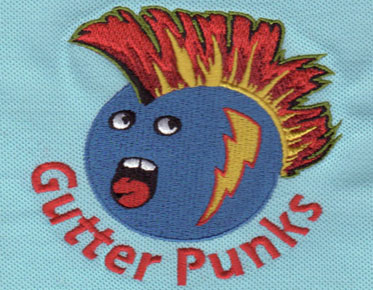Logo Registration Problem in Embroidery Digitalization
Digitization is a typical excuse for bad embroidery registration. This isn't just about the document, bitmap, or grid provided by the client; it's possible that you'll find "simple" pictures (for example, keystrokes and stock designs). The following content also has some reference value for Eagle digitizing.
The problem of poor digitalization is usually divided into three categories:
The setting of a specific substrate used is
incorrect.
Design parameters operation.
Use the design on a substrate differently from digitalization.
The settings of specific embroidery
projects are not good
Usually, incorrect settings mean that the digital instrument may not have enough experience in the digitalization program (such as Sierra's Stitch Era Liberty), or it does not pay enough attention to the details of the project. The most critical element in the digital process is to compensate for push -pull during each embroidery process. First of all, you must fully understand the substrates and specific characteristics you will sew.
Don't understand the fabric
Some textiles are considered more "stable" than other textiles. If you use more unstable materials, such as thin and transparent fabrics, other elements may be required to ensure that quality and standards are kept at the best level.
Poor digitalization may come from the push -pull trend in the process of embroidery, and there is no prediction or compensation. In most cases, this is the main reason for poor registration.
Sizer issue
In some cases, the embroiders can get digital design, and try to adjust their size or change some parameters to meet customers or their own needs. Change the original design requires the exact characteristics of high -quality embroidery, change them and change the expected quality.
By changing the size of the design, it is tilted or rotated, and it sews it on the deviation. You have changed the design to get rid of the original digital and test methods. You have the opportunity to create a inferior finished product now.
Fairly, as there are many types of software on the market today, it is becoming increasingly difficult to predict how specific programs will modify the original design. In some programs, even if there are no other changes, after reopening the design, the simply adjustment of the suture can be changed.
In addition, if you change the size of the
embroidery pattern, it is likely to affect registration. Adjusting the length
of the needle, especially on the fabric such as satin, may have a negative
effect. Change or modify the design can only be carried out on the design copy,
and cannot be carried out on actual documents. Don't forget to check carefully!
Different fabrics provide different effects
Sewing design on different clothing, materials, or substrates, rather than digital, may lead to a series of quality problems. No design can be sewn well on each fabric. Each fabric has different characteristics, so the design of each fabric needs different digitalization. In reality, embroidery shops will not want to pay for different versions of the same design.
In most cases, they will do whatever they
want to try to use it on each fabric and cross their fingers, hoping that it
can work. When a design cannot be converted well on different substrates, the
embroidery shop immediately blames digitalization.



